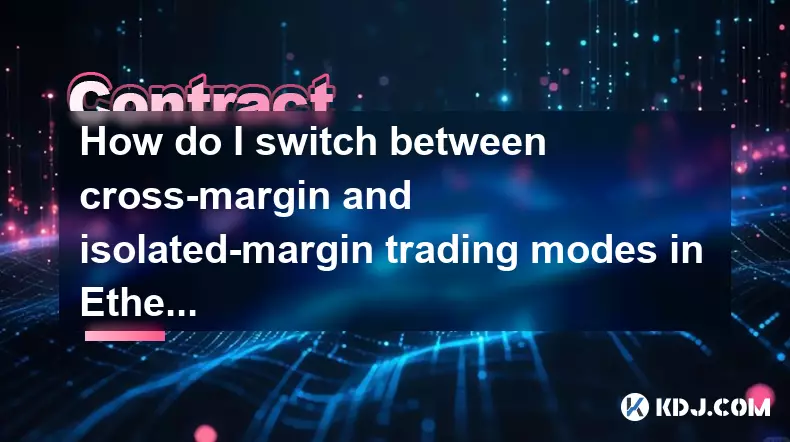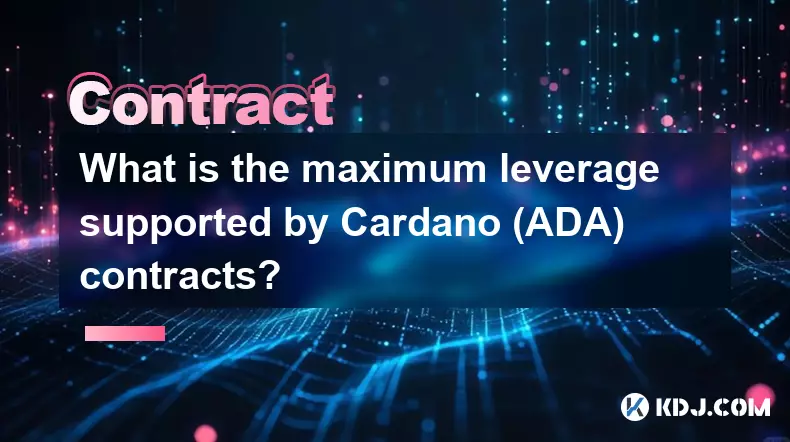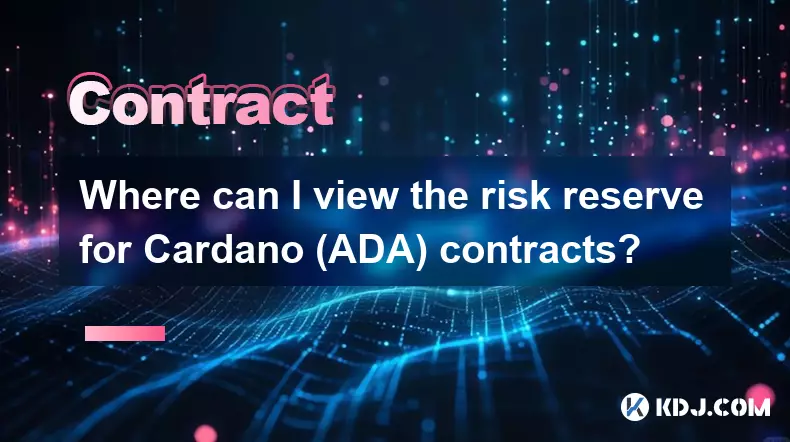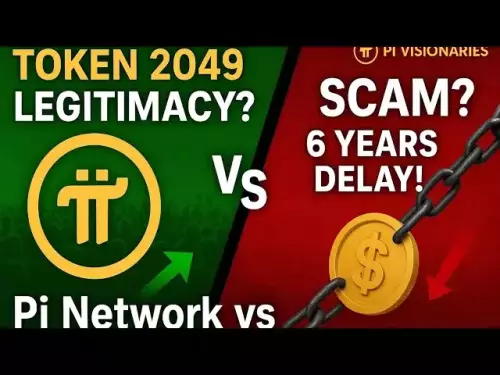-
 bitcoin
bitcoin $114779.865156 USD
2.30% -
 ethereum
ethereum $4226.519789 USD
2.39% -
 tether
tether $1.000545 USD
0.04% -
 xrp
xrp $2.890223 USD
0.92% -
 bnb
bnb $1030.029301 USD
2.95% -
 solana
solana $212.824944 USD
1.69% -
 usd-coin
usd-coin $0.999757 USD
0.01% -
 dogecoin
dogecoin $0.234961 USD
-0.27% -
 tron
tron $0.337174 USD
0.42% -
 cardano
cardano $0.804783 USD
0.09% -
 hyperliquid
hyperliquid $45.748770 USD
-2.85% -
 chainlink
chainlink $21.699170 USD
0.82% -
 ethena-usde
ethena-usde $1.001452 USD
0.08% -
 avalanche
avalanche $30.237800 USD
1.14% -
 stellar
stellar $0.372604 USD
1.52%
How do I switch between cross-margin and isolated-margin trading modes in Ethereum contracts?
Switching margin modes on Ethereum-based platforms like dYdX or GMX affects how collateral is used, impacting liquidation risks and trade management.
Sep 26, 2025 at 12:18 am

Understanding Margin Modes in Ethereum-Based Trading
1. Ethereum-based decentralized exchanges and perpetual contract platforms often support two primary margin modes: cross-margin and isolated-margin. These modes determine how collateral is allocated against open positions. Cross-margin uses the entire wallet balance as collateral, reducing the risk of liquidation by spreading exposure across all funds. Isolated-margin assigns a fixed amount of capital to a specific position, limiting both potential losses and gains to that designated sum.
2. Switching between these modes is typically managed through the trading interface of platforms such as dYdX, GMX, or Perpetual Protocol, which operate on Ethereum or its layer-2 solutions. Users must ensure their wallet is connected and they are interacting with a supported smart contract for derivatives trading. The switch does not alter existing positions but applies only to new trades unless explicitly modified for active ones.
3. The underlying mechanism relies on function calls within the platform’s smart contracts. For instance, a user may trigger a state change via an Ethereum transaction invoking a method like setMarginType() or similar, depending on the protocol's architecture. This transaction requires gas fees paid in ETH and confirmation on the blockchain before taking effect.
4. It is critical to review the health of current positions before switching, especially when moving from cross to isolated mode. Reducing available margin can trigger immediate liquidation if the assigned collateral falls below maintenance requirements. Platforms usually display warnings when such risks are detected.
Steps to Change Margin Mode on Major Platforms
1. Navigate to the derivatives or futures section of the DeFi application. Confirm connectivity with a Web3 wallet such as MetaMask or WalletConnect. Ensure sufficient ETH is available for gas costs associated with the transaction.
2. Locate the margin mode selector, generally visible near the order entry panel. It may appear as a toggle button labeled “Cross” or “Isolated.” Clicking it opens a dropdown or modal window where the alternative mode can be selected.
3. Before confirming, verify whether the change affects open positions. Some platforms allow retroactive updates; others restrict changes to new entries only. Read any pop-up notices regarding liquidation thresholds and leverage limits tied to the chosen mode.
4. Submit the request. A wallet prompt will appear asking for transaction approval. Once signed and broadcasted, the Ethereum network processes the update. Transaction status can be tracked using block explorers like Etherscan.
5. After confirmation, the new margin setting becomes active. Subsequent trades will adhere to the updated configuration. Users should monitor their position dashboard to confirm correct application of the mode.
Risks and Considerations When Adjusting Margin Settings
1. Liquidation sensitivity increases in isolated mode due to limited collateral. A sharp price movement can wipe out the allocated margin even if overall account equity remains strong. Traders must set appropriate stop levels and monitor volatility indicators.
2. In cross-margin mode, while protection is broader, systemic risk arises if multiple positions move adversely at once. Total account balance may erode faster than anticipated, particularly during high-leverage scenarios or flash crashes.
3. Not all assets qualify for both modes. Certain tokens or pairs might be restricted based on platform risk parameters. Check asset-specific rules before initiating trades.
4. Smart contract vulnerabilities remain a concern. Though audited, code flaws could potentially misinterpret margin settings under edge cases. Use only well-established protocols with transparent security practices.
5. Network congestion on Ethereum can delay transaction finality. A pending swap in margin mode leaves the account in an ambiguous state until confirmed, exposing traders to temporary inconsistencies in risk calculation.
Frequently Asked Questions
Can I automate margin mode switching based on market conditions?Automation requires integration with a bot or script capable of reading price feeds and submitting transactions. Some advanced trading bots support conditional logic for margin adjustments, provided private keys are securely managed and gas costs are pre-funded.
Does changing margin mode affect funding rate payments?No. Funding rates are determined by the perpetual contract’s pricing mechanism and are independent of margin allocation. Whether using cross or isolated, long and short positions continue paying or receiving funding at the same interval and rate.
Are there fees associated with switching margin modes?The act of switching incurs standard Ethereum gas fees, which vary with network demand. No additional protocol fee is charged by most platforms for this action, though embedded costs may exist within complex contract interactions.
What happens if I try to switch modes during extreme volatility?During volatile periods, price oracles may lag, causing temporary restrictions on mode changes. Some platforms disable modifications until market stability returns to prevent erroneous risk exposures. Always check interface availability and error messages before attempting the switch.
Disclaimer:info@kdj.com
The information provided is not trading advice. kdj.com does not assume any responsibility for any investments made based on the information provided in this article. Cryptocurrencies are highly volatile and it is highly recommended that you invest with caution after thorough research!
If you believe that the content used on this website infringes your copyright, please contact us immediately (info@kdj.com) and we will delete it promptly.
- AI Training's Energy Crisis: Can Decentralization with Greg Osuri Offer a Solution?
- 2025-09-30 20:45:14
- Crypto Presales: Unlocking Potential 'Buy Now' for 'Presale Gains'
- 2025-09-30 21:05:15
- Prenetics, Danny Yeung, and Token 2049: A Bold Bitcoin Strategy
- 2025-09-30 20:45:14
- Bitcoin Investment in 2025: Navigating the Crypto Landscape
- 2025-09-30 20:50:11
- Pi Network Price Prediction & Crypto News: Navigating the Hype in a Utility-Driven Market
- 2025-09-30 21:05:15
- Dogecoin, Pepe Coin, and Remittix: Meme Mania Meets Utility in the Crypto Wild West
- 2025-09-30 20:50:11
Related knowledge

What is the maximum leverage supported by Cardano (ADA) contracts?
Sep 30,2025 at 03:37am
Understanding Leverage in ADA Derivatives Trading1. Leverage in cryptocurrency futures and perpetual contracts allows traders to control larger positi...

How do I use the scheduled order feature in Cardano (ADA) contracts?
Sep 28,2025 at 10:18pm
Understanding Scheduled Orders in Cardano Smart ContractsCardano operates on a proof-of-stakes consensus mechanism and uses the Plutus scripting langu...

Can I modify the leverage of Cardano (ADA) contracts after opening a position?
Sep 30,2025 at 08:19am
Understanding Leverage in Cardano (ADA) Futures Trading1. Leverage allows traders to control larger positions using a smaller amount of capital. In th...

Where can I view the risk reserve for Cardano (ADA) contracts?
Sep 29,2025 at 09:19pm
Risk Reserve Overview in Cardano (ADA) Ecosystem1. The concept of a risk reserve within the Cardano blockchain does not align with traditional central...

How do I enable the "scalping-only" mode for Cardano (ADA) contracts?
Sep 24,2025 at 03:19am
Understanding Scalping Strategies in Crypto Derivatives1. Scalping in cryptocurrency trading refers to executing multiple short-term trades within min...

What is the settlement time for Cardano (ADA) contracts?
Sep 28,2025 at 04:18am
Understanding Cardano's Contract Settlement Mechanism1. Cardano operates on a proof-of-stake consensus model known as Ouroboros, which fundamentally i...

What is the maximum leverage supported by Cardano (ADA) contracts?
Sep 30,2025 at 03:37am
Understanding Leverage in ADA Derivatives Trading1. Leverage in cryptocurrency futures and perpetual contracts allows traders to control larger positi...

How do I use the scheduled order feature in Cardano (ADA) contracts?
Sep 28,2025 at 10:18pm
Understanding Scheduled Orders in Cardano Smart ContractsCardano operates on a proof-of-stakes consensus mechanism and uses the Plutus scripting langu...

Can I modify the leverage of Cardano (ADA) contracts after opening a position?
Sep 30,2025 at 08:19am
Understanding Leverage in Cardano (ADA) Futures Trading1. Leverage allows traders to control larger positions using a smaller amount of capital. In th...

Where can I view the risk reserve for Cardano (ADA) contracts?
Sep 29,2025 at 09:19pm
Risk Reserve Overview in Cardano (ADA) Ecosystem1. The concept of a risk reserve within the Cardano blockchain does not align with traditional central...

How do I enable the "scalping-only" mode for Cardano (ADA) contracts?
Sep 24,2025 at 03:19am
Understanding Scalping Strategies in Crypto Derivatives1. Scalping in cryptocurrency trading refers to executing multiple short-term trades within min...

What is the settlement time for Cardano (ADA) contracts?
Sep 28,2025 at 04:18am
Understanding Cardano's Contract Settlement Mechanism1. Cardano operates on a proof-of-stake consensus model known as Ouroboros, which fundamentally i...
See all articles










































































